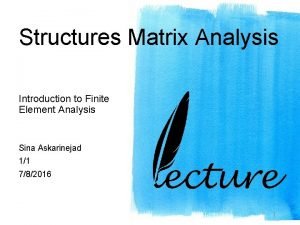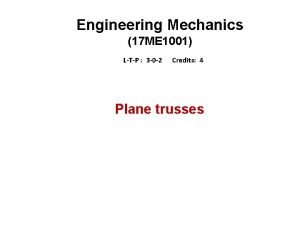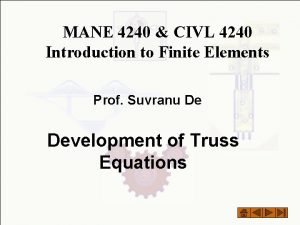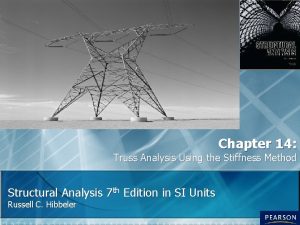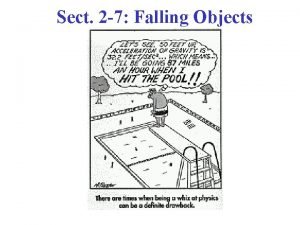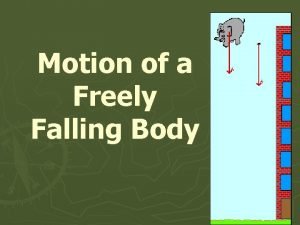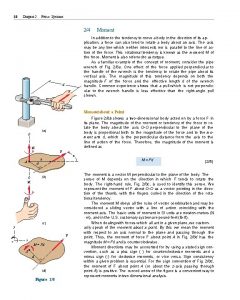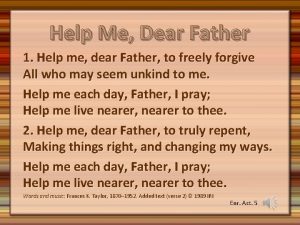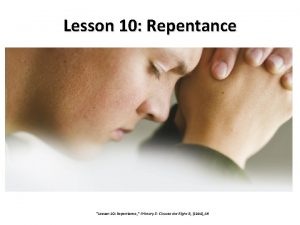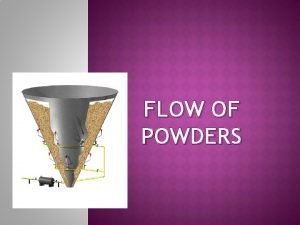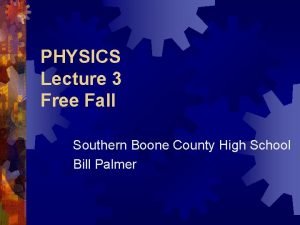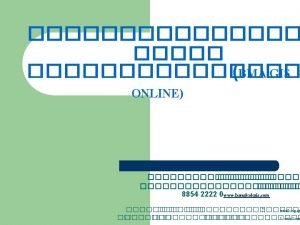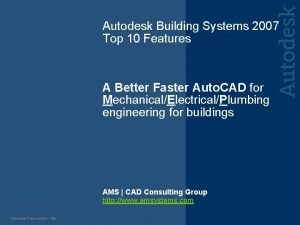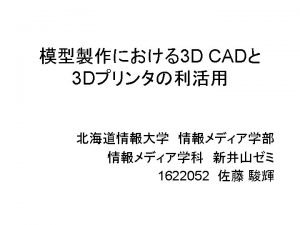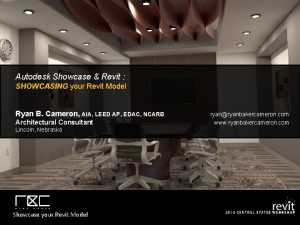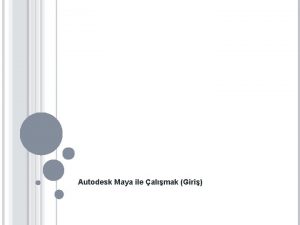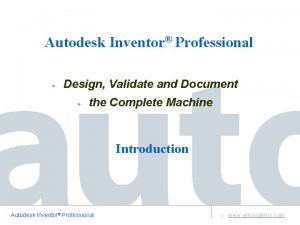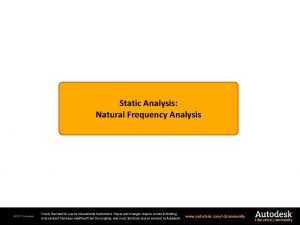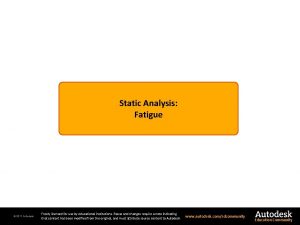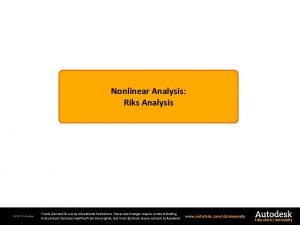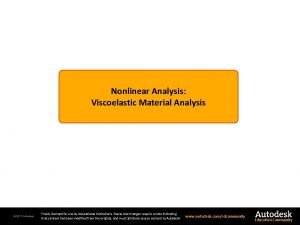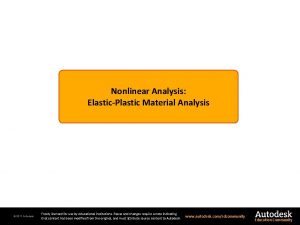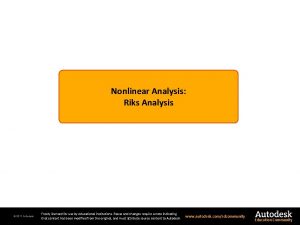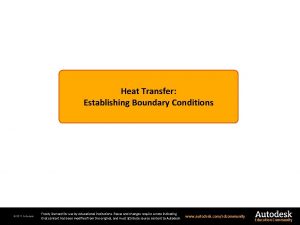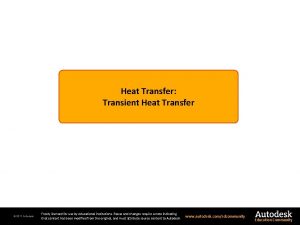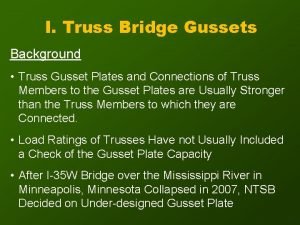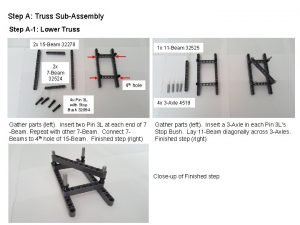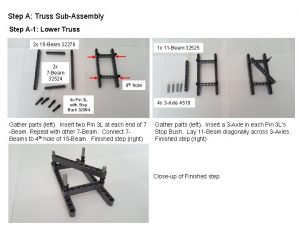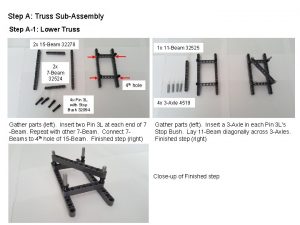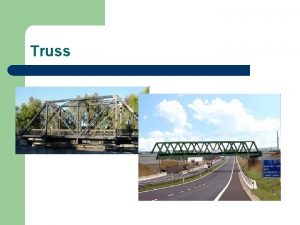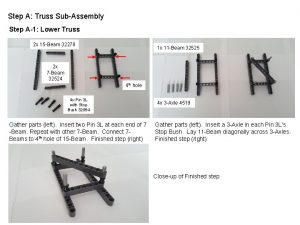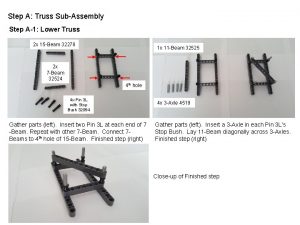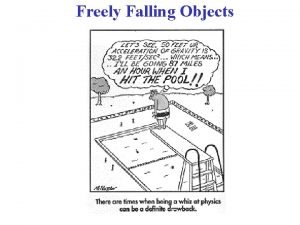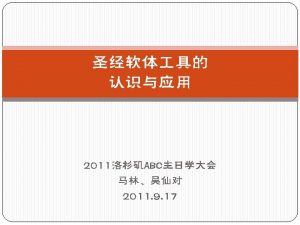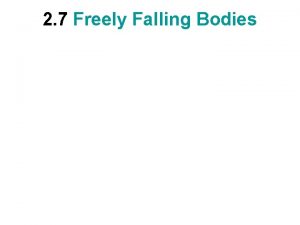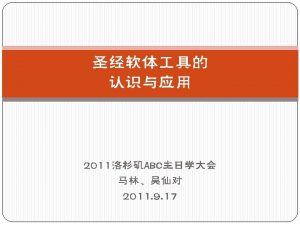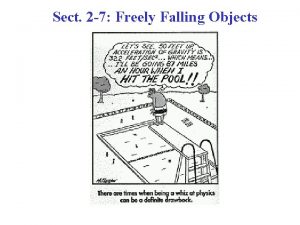Static Analysis Truss Element Equations 2011 Autodesk Freely




























- Slides: 28

Static Analysis: Truss Element Equations © 2011 Autodesk Freely licensed for use by educational institutions. Reuse and changes require a note indicating that content has been modified from the original, and must attribute source content to Autodesk. www. autodesk. com/edcommunity Education Community

Section II – Static Analysis Objectives Module 3 – Truss Element Equations Page 2 The objective of this module is to show the equations developed in Modules 1 and 2 convert to matrix equations for a typical element. Notation familiar with upper division undergraduate students is used instead of the more compact indicial notation introduced at the graduate level. § The various differentials, variations, and time derivatives of Green’s strain used in the Lagrangian rate of virtual work are developed. § A one-dimensional truss element is used to demonstrate the process § It contains most of the features of multi-dimensional elements, § The integrations can be carried out manually. § © 2011 Autodesk Freely licensed for use by educational institutions. Reuse and changes require a note indicating that content has been modified from the original, and must attribute source content to Autodesk. www. autodesk. com/edcommunity Education Community

Section II – Static Analysis Configurations Module 3 – Truss Element Equations Page 3 Q* P* Body in Current Configuration y, y* Q P z, z* © 2011 Autodesk Body in Reference Configuration x, x* § An arbitrary line element is defined by points P & Q in the reference configuration. § The same points are defined by P* and Q* in the current configuration. § f, g & h are functions that relate the coordinates of a point in the current configuration to the coordinates in reference configuration. Freely licensed for use by educational institutions. Reuse and changes require a note indicating that content has been modified from the original, and must attribute source content to Autodesk. www. autodesk. com/edcommunity Education Community

Section II – Static Analysis Deformation Gradient Module 3 – Truss Element Equations Page 4 § A differential change in the reference configuration and current configuration coordinates are related through the deformation gradient. Differential Changes Matrix Form § The Deformation Gradient is defined by the array [F]. § It is the Jacobian of the transformation between the current and reference configurations. © 2011 Autodesk Freely licensed for use by educational institutions. Reuse and changes require a note indicating that content has been modified from the original, and must attribute source content to Autodesk. www. autodesk. com/edcommunity Education Community

Section II – Static Analysis Deformation Gradient Components Module 3 – Truss Element Equations Page 5 § The displacements ux, uy, and uz in the x, y and z directions can be used to determine the mapping functions f, g and h. y Current Configuration Using these functions, the components of the deformation gradient become Reference Configuration x z © 2011 Autodesk Freely licensed for use by educational institutions. Reuse and changes require a note indicating that content has been modified from the original, and must attribute source content to Autodesk. www. autodesk. com/edcommunity Education Community

Section II – Static Analysis Green’s Strain Module 3 – Truss Element Equations Page 6 § Green’s strain is defined by the equation Small strain definition § Green’s strain uses the length squared of a differential line element instead of the differential length. § For small displacements and rotations, Green’s strain and the small strain give similar results. © 2011 Autodesk Freely licensed for use by educational institutions. Reuse and changes require a note indicating that content has been modified from the original, and must attribute source content to Autodesk. www. autodesk. com/edcommunity Education Community

Section II – Static Analysis Green’s Strain and Deformation Gradient Module 3 – Truss Element Equations Page 7 § The Deformation Gradient is the fundamental building block needed to find the components of Green’s strain Current Configuration Reference Configuration Deformation Gradient © 2011 Autodesk Freely licensed for use by educational institutions. Reuse and changes require a note indicating that content has been modified from the original, and must attribute source content to Autodesk. www. autodesk. com/edcommunity Education Community

Section II – Static Analysis Components of Green’s Strain Module 3 – Truss Element Equations Page 8 § The combination of equations on the previous slide gives the equation Green’s Strain where Components of Green’s Strain This equation is used extensively in subsequent slides. © 2011 Autodesk Freely licensed for use by educational institutions. Reuse and changes require a note indicating that content has been modified from the original, and must attribute source content to Autodesk. www. autodesk. com/edcommunity Education Community

Section II – Static Analysis Green’s Strain – Displacement Equations Module 3 – Truss Element Equations Page 9 § The Deformation Gradient can be used to find the equations for the component of Green’s strain commonly found in textbooks. Carrying out the matrix operations yields © 2011 Autodesk Freely licensed for use by educational institutions. Reuse and changes require a note indicating that content has been modified from the original, and must attribute source content to Autodesk. www. autodesk. com/edcommunity Education Community

Section II – Static Analysis Truss Element Geometry Module 3 – Truss Element Equations Page 10 § Element matrices are derived using the element coordinate system. They can be transformed to the global coordinate system at the end. Y X, Y, Z Global Coordinate System x, y, z Node j Element Coordinate System Current Configuration Element Coordinate System y x Node i Node j Reference Configuration Node i z Z © 2011 Autodesk Freely licensed for use by educational institutions. Reuse and changes require a note indicating that content has been modified from the original, and must attribute source content to Autodesk. X Global Coordinate System www. autodesk. com/edcommunity Education Community

Section II – Static Analysis Notation Module 3 – Truss Element Equations Page 11 § Quantities that have an over score associated with a node point (i. e. node i or node j). § In the array, © 2011 Autodesk is equal to the x displacement measured at node i. Freely licensed for use by educational institutions. Reuse and changes require a note indicating that content has been modified from the original, and must attribute source content to Autodesk. www. autodesk. com/edcommunity Education Community

Section II – Static Analysis Truss Interpolation Functions Module 3 – Truss Element Equations Page 12 § The displacement or virtual velocity components at any point along the length of the element can be found using interpolation functions. where Note that at x = L, N 1 = 0 and N 2 = 1, at x = 0, N 1 = 1 and N 2 = 0. © 2011 Autodesk Freely licensed for use by educational institutions. Reuse and changes require a note indicating that content has been modified from the original, and must attribute source content to Autodesk. www. autodesk. com/edcommunity Education Community

Section II – Static Analysis Tangent Stiffness Matrix Equations Module 3 – Truss Element Equations Page 13 § The Newton-Raphson equations developed in Module 2 are § The left hand side of this equation can be written as where 1 st Integral 2 nd Integral 3 rd Integral 4 th Integral § The first two integrals are evaluated in subsequent slides. The third and fourth integrals are not as important for common problems and are not evaluated. © 2011 Autodesk Freely licensed for use by educational institutions. Reuse and changes require a note indicating that content has been modified from the original, and must attribute source content to Autodesk. www. autodesk. com/edcommunity Education Community

Section II – Static Analysis 1 st Integral: Stress Increment Module 3 – Truss Element Equations Page 14 § The first integral that contributes to the tangent stiffness matrix is § The differential of the matrix containing the components of the 2 nd Piola stress tensor can be related to the differential of Green’s strain via material constitutive equations. § For a truss element made from a linear elastic material this equation becomes § Where Y is Young’s Modulus. © 2011 Autodesk Freely licensed for use by educational institutions. Reuse and changes require a note indicating that content has been modified from the original, and must attribute source content to Autodesk. www. autodesk. com/edcommunity Education Community

Section II – Static Analysis 1 st Integral: Differential of Green’s Strain Module 3 – Truss Element Equations Page 15 § The first integral also requires equations for the differential of the virtual rate of Green’s strain. § All six components are given, but only d. Exx is needed for the truss element. © 2011 Autodesk Freely licensed for use by educational institutions. Reuse and changes require a note indicating that content has been modified from the original, and must attribute source content to Autodesk. www. autodesk. com/edcommunity Education Community

Section II – Static Analysis 1 st Integral: Differential of Green’s Strain Module 3 – Truss Element Equations Page 16 § The truss element interpolation functions can be used to evaluate d. Exx for the truss element. © 2011 Autodesk Freely licensed for use by educational institutions. Reuse and changes require a note indicating that content has been modified from the original, and must attribute source content to Autodesk. www. autodesk. com/edcommunity Education Community

Section II – Static Analysis 1 st Integral: Differential of Green’s Strain Module 3 – Truss Element Equations Page 17 § Combining the equations from the previous slide and writing them in matrix notation yields 1 x 1 1 x 6 § The array BL contains the linear terms and array BNL contains the displacement dependent non-linear terms. 6 x 1 where © 2011 Autodesk Freely licensed for use by educational institutions. Reuse and changes require a note indicating that content has been modified from the original, and must attribute source content to Autodesk. www. autodesk. com/edcommunity Education Community

Section II – Static Analysis 1 st Integral: Virtual Rate of Green’s Strain Module 3 – Truss Element Equations Page 18 § The first integral also requires equations for the virtual rate of Green’s strain. § All six components are given, but only is needed for the truss element. © 2011 Autodesk Freely licensed for use by educational institutions. Reuse and changes require a note indicating that content has been modified from the original, and must attribute source content to Autodesk. www. autodesk. com/edcommunity Education Community

Section II – Static Analysis 1 st Integral: Virtual Rate of Green’s Strain Module 3 – Truss Element Equations Page 19 § In a manner similar to that used for the differential of Green’s strain, these equations can be written as 1 x 1 1 x 6 6 x 1 where © 2011 Autodesk Freely licensed for use by educational institutions. Reuse and changes require a note indicating that content has been modified from the original, and must attribute source content to Autodesk. www. autodesk. com/edcommunity Education Community

Section II – Static Analysis 1 st Integral: Final Form Module 3 – Truss Element Equations Page 20 § Collecting terms from previous slides and carrying out the integration yields the equation for the 1 st integral or 6 x 6 Contribution to Tangent Stiffness Matrix © 2011 Autodesk where 1 x 6 Relates element strain increments or rates to the node point displacement increments or rates. Freely licensed for use by educational institutions. Reuse and changes require a note indicating that content has been modified from the original, and must attribute source content to Autodesk. www. autodesk. com/edcommunity Education Community

Section II – Static Analysis 1 st Integral: Material Stiffness Matrix Module 3 – Truss Element Equations Page 21 § This 6 x 6 matrix is a function of Young’s modulus and is thus dependent on the material. It is also a function of the length and cross sectional area. § The matrix [B] contains two contributions. [BL] is linear and leads to the linear stiffness matrix, [KL]. [BNL] is a function of the displacements and changes as the truss element deforms. This gives rise to a non-linear stiffness contribution. This contribution to the tangent stiffness matrix is denoted as [K(u)]. Linear Stiffness Matrix © 2011 Autodesk Freely licensed for use by educational institutions. Reuse and changes require a note indicating that content has been modified from the original, and must attribute source content to Autodesk. www. autodesk. com/edcommunity Education Community

2 nd Integral: Differential of Virtual Rate of Green’s Strain Section II – Static Analysis Module 3 – Truss Element Equations Page 22 § The second integral is § Carrying out the matrix multiplications yields § This is the only component needed for a truss element. © 2011 Autodesk Freely licensed for use by educational institutions. Reuse and changes require a note indicating that content has been modified from the original, and must attribute source content to Autodesk. www. autodesk. com/edcommunity Education Community

Section II – Static Analysis 2 nd Integral: Manipulations Module 3 – Truss Element Equations Page 23 § The integrand for a truss element is § The integrand can be written in matrix form as © 2011 Autodesk Freely licensed for use by educational institutions. Reuse and changes require a note indicating that content has been modified from the original, and must attribute source content to Autodesk. www. autodesk. com/edcommunity Education Community

Section II – Static Analysis 2 nd Integral: Interpolation Functions Module 3 – Truss Element Equations Page 24 § Using the interpolation functions the partial derivatives can be written in terms of node point values § The integrand becomes § and the integral becomes where © 2011 Autodesk Freely licensed for use by educational institutions. Reuse and changes require a note indicating that content has been modified from the original, and must attribute source content to Autodesk. www. autodesk. com/edcommunity Education Community

Section II – Static Analysis 2 nd Integral: Initial Stress Stiffness Matrix Module 3 – Truss Element Equations Page 25 Truss Element Initial Stress Stiffness Matrix © 2011 Autodesk Freely licensed for use by educational institutions. Reuse and changes require a note indicating that content has been modified from the original, and must attribute source content to Autodesk. General Form for other Element Types www. autodesk. com/edcommunity Education Community

Section II – Static Analysis Restoring Force Module 3 – Truss Element Equations Page 26 § The restoring force comes from the internal rate of virtual work term § The virtual rate of Green’s strain for the truss element is given on previous slides as § The truss element internal rate of virtual work becomes © 2011 Autodesk Freely licensed for use by educational institutions. Reuse and changes require a note indicating that content has been modified from the original, and must attribute source content to Autodesk. www. autodesk. com/edcommunity Education Community

Section II – Static Analysis Restoring Force Module 3 – Truss Element Equations Page 27 § Since Txx and the components of BL and BNL are constant over the volume of the element, the previous equation reduces to or where This is a 6 x 1 array that has units of force. © 2011 Autodesk Freely licensed for use by educational institutions. Reuse and changes require a note indicating that content has been modified from the original, and must attribute source content to Autodesk. www. autodesk. com/edcommunity Education Community

Section II – Static Analysis Module Summary Module 3 – Truss Element Equations Page 28 § This module has shown how to go from the incremental form of the rate of virtual work to the matrix equations for an element. § The deformation gradient and its variations and derivatives are key ingredients to this process. § A truss element was used because the element level integrations can be carried out by hand. § Matrix notation is used in-lieu of the more common indicial notation. © 2011 Autodesk Freely licensed for use by educational institutions. Reuse and changes require a note indicating that content has been modified from the original, and must attribute source content to Autodesk. www. autodesk. com/edcommunity Education Community
 Autodesk maya 2011
Autodesk maya 2011 Truss finite element analysis
Truss finite element analysis Engineering mechanics
Engineering mechanics Global stiffness matrix
Global stiffness matrix Stiffness matrix of truss element
Stiffness matrix of truss element Cuckoo
Cuckoo What is the acceleration of a freely falling object?
What is the acceleration of a freely falling object? Motion of freely falling bodies
Motion of freely falling bodies The throttle-control sector pivots freely at o
The throttle-control sector pivots freely at o Forgive
Forgive Affective play space
Affective play space One day he's coming oh glorious day
One day he's coming oh glorious day Help me dear father to freely forgive
Help me dear father to freely forgive Bulkiness of powder
Bulkiness of powder The freely chosen activity between buyers and sellers
The freely chosen activity between buyers and sellers A brick falls freely from a high scaffold
A brick falls freely from a high scaffold The term bicameralism refers to the
The term bicameralism refers to the The idea that judges ought to freely strike down
The idea that judges ought to freely strike down Autodesk map guide
Autodesk map guide Autodesk inventor 2008
Autodesk inventor 2008 Autodesk exchange
Autodesk exchange Autodesk building systems
Autodesk building systems Productstream autodesk
Productstream autodesk Simulador gmetrix
Simulador gmetrix Aud autodesk
Aud autodesk Scad fusion
Scad fusion Showcase revit
Showcase revit Autodesk
Autodesk Autodesk inventor
Autodesk inventor

